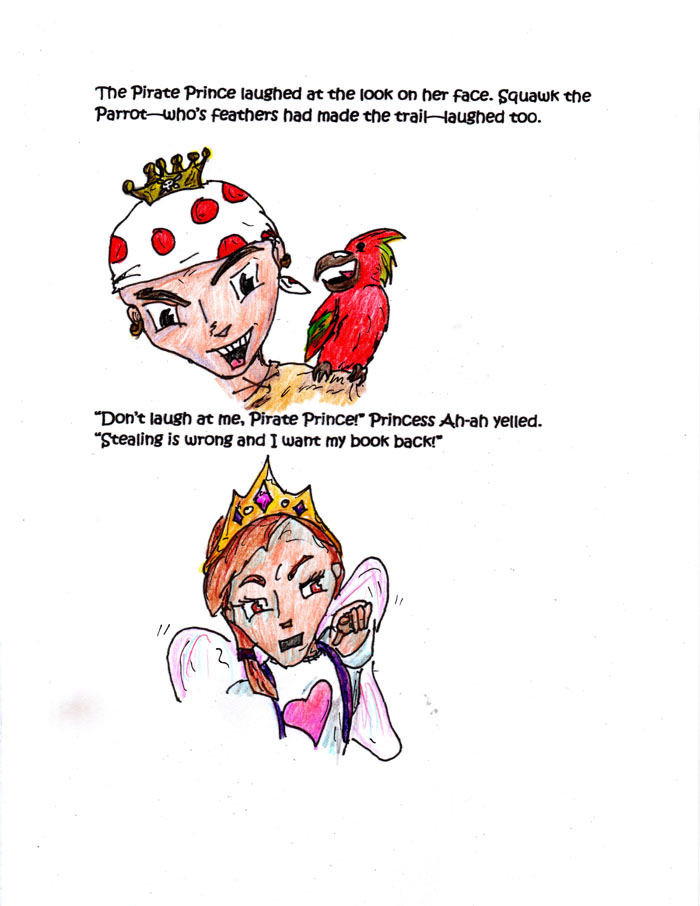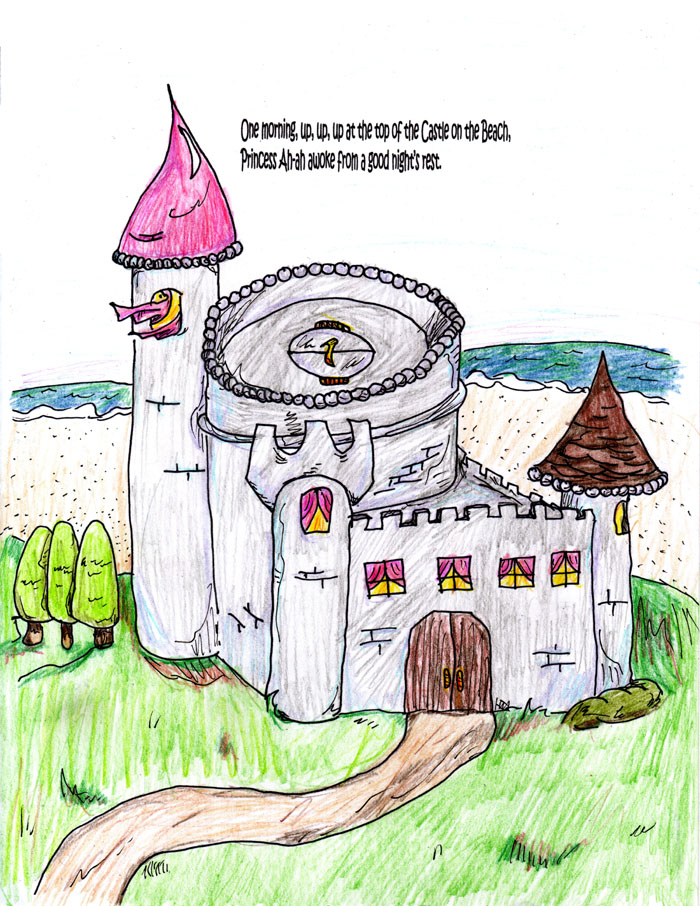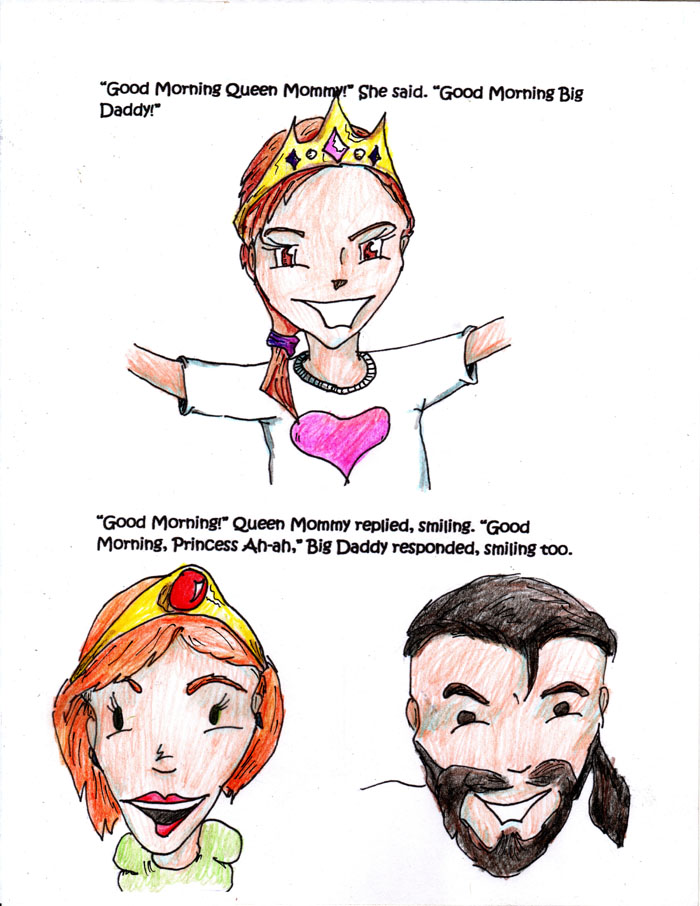Princess Ah-ah and the Family Fable
“I imagine [the stories] very clearly and then attempt to describe what I can see.
Sometimes I draw them for my own amusement!”
– J.K. Rowling
Welcome to a brief article about the value of children’s books. I may share some advice–or more clearly put–some observations–on how to do it, because I stumbled into writing and illustrating one this month.
It’s NOT Kid Stuff
Here’s what I thought Oh, my daughter’s getting older (4 now) and doesn’t want to hear the “baby stories” which Suzanne and I told her before bed. I’ll whip up a children’s book that highlights them in a new adventure so we don’t lose that part of her childhood.
Whip up. Right. First, writing it down was harder than telling it to her as she drifted to sleep. Plot was more of a focus, for sure. There was a bunch of notes and outlining. Drawing it took a great deal of effort. Twenty pages equals many drawings. Plus, my style is:
- Pencil Sketch
- Inking
- Layered colored pencils
- Finishing ink layer
…so that was wonderfully time consuming.
Finally, tone is crucial and for a writer of any story but especially in a children’s book. It is also especially difficult if you normally write for grown-ups. The challenge, as in talking to kids, is to write on their level, not talk down to them.
All-in-all, I think I worked equally hard as in writing any 3-5K word count short story, so brace yourself, if you plan for such an undertaking.
The Value of Villainy
 Behold, the Pirate Prince! We came to the Pirate Prince around my daughter’s second to third year. Before that there were minor villains or more often complex problems for Princess Ah-ah to solve. Once the Prince entered the narrative the stories gained more internal momentum, and also more moralistic value.
Behold, the Pirate Prince! We came to the Pirate Prince around my daughter’s second to third year. Before that there were minor villains or more often complex problems for Princess Ah-ah to solve. Once the Prince entered the narrative the stories gained more internal momentum, and also more moralistic value.
A villain is a great thing. They are the alternate perspective, the object lesson, the road less traveled and the negative emotion in the extreme presentation. All are great teaching and experiencing points for children.
Also—and this was always my favorite episode in cartoons (i.e.: Stormshadow and Snake Eyes in the snow storm) the villain gives the hero a chance to show compassion, understanding, release of their own grudge and teamwork when the story calls for putting aside their differences for the greater good.
Build a Family Fable
A family fable is what all these stories are. We began with my daughter’s first nick name. We added ourselves because she asked for them, and her friends, and the pets she encountered and more. I had to think about the first story ever and realized that Princess Ah-ah and the Castle on the Beach was just a way to prepare her, through fantasy, for a trip to the Jersey Shore and a hotel stay.
We used that same concept throughout her early years; use the story to prepare, reflect, teach and encounter. Princess Ah-ah, the Hitting Tree and Biting Bush taught her (at age one) not to hit and bite her friends. Princess Ah-ah and the Bookstore on the Beach both glamorized her first trip to the bookstore and normalized the construction on our street that summer. Princess Ah-ah and the Castle of the Winds helped ease her separation from her cousins after a trip to Chicago—the windy city.
Now we say goodbye to Princess Ah-ah in favor of Rainbow Dash, Pinkie Pie and the rest of the Ponies. I’m fine with that; the Ponies are equally good lesson-fables. We’ll hold on to our fable, though, and pull it out from time to time. It’s my guess that though she’s out grown the stories, the lessons, and the gutsiness of Princess Ah-ah live on in her. That was the point, after all.


